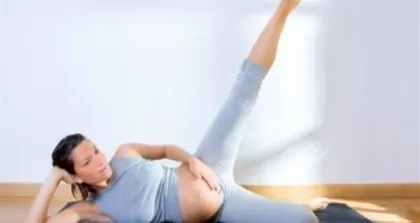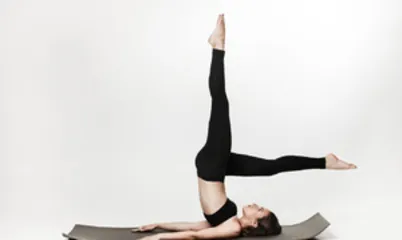Yoga poses: recumbent pose
Illustration:


posture decomposition:
·Lie flat on the ground, stretch your spine, and place your arms on your sides. Push your feet straight and open slightly, with your heels forward and your toes up. Bend your right knee and hold your right toe with your right hand.
·Inhale, slowly push your right foot straight, stretching it as far as possible, with your heels up and your toes towards your face. Press your left hand on the ground on the outside of your left thigh. Keep your left foot straight and hard, and your left pelvis is pressed against the ground. Do not arch your back in order to tighten your right foot, and do not retract or raise your shoulders. Both hips must be close to the ground. Keep breathing naturally.
·Hold this position for about 20 to 30 seconds, then change your feet and repeat the above steps.
Efficacy:
· Supta Padanguthasana Reclining Big Toe This action of stretching the thigh with your toes may seem ordinary, but don't underestimate it because it can fully stretch the hamstring muscles of the thigh and improve its flexibility. Too tight hamstring muscles can affect the stretching of your feet and the health of your crotch. It can also affect your daily standing and sitting posture, resulting in low back pain or back pain. Therefore, we should loosen it often to make the body soft and keep healthy. The key point of this posture is that when one foot is pushed straight up, the thighs that are pushed straight up should be pressed hard in the direction of the ground to prevent the buttocks from leaving the ground; the calves should be stretched in the opposite direction of the head.
·Stretch the calf, thigh hamstring and crotch muscles to improve flexibility.
·Relieves back pain, sciatica and menstrual pain.
·Regulate menstrual flow.
·Improve the digestive system.
·Massage men's prostate.
·Use as a counter pose as a "reclining pose" to soothe tired back muscles. Note: The "reverse posture" is to turn the body in the opposite direction of the previous movement to maintain the balance of the body. For example, the "back extension" is the reverse posture of the "reclining back".
Common mistakes:
·Bend your back.
·Contraction your neck.
·Tilt your body to one side.
·Shoulder retracted or raised.
·Your feet are not straightened.
·The thighs and pelvis rise from the ground.
·Feet on the ground branch out left and right.
Tips:
·If you have just had abdominal pain, headache, asthma, heart disease, etc., please do not do this position.
·People with high blood pressure should keep their head and neck high.
·Yoga is life-oriented, and it is important to practice consistently.
·Difficulty adjustment: If you can't hold your toes tightly, put the yoga rope on the soles of your feet and then pull the rope head instead. The key point is to keep both your upper and lower feet straight. (Editor in charge: Zhao Ruilan)